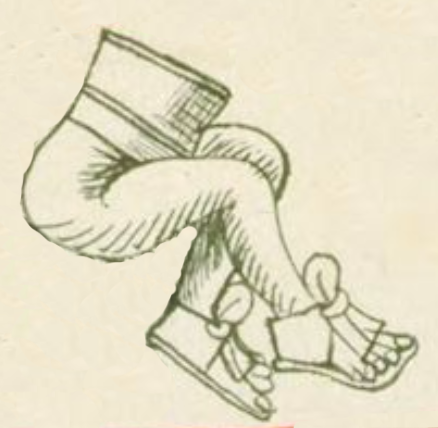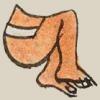tzintli (Chav1)
This black-line drawing of the element representing a buttocks (tzintli) has been carved from the place name Chiyauhtzinco, where it played a phonetic role. Here, separated from the rest of that compound, this element could be seen as a simplex noun and just a logogram. This is a much more elaborate drawing of a half of a human in profile (facing right) than the earlier glyph for tzintli. Shading is added for three-dimensionality, suggesting European stylistic influence. The person is wearing tied sandals. He has a belt around his waist, which may suggest a loincloth. The legs are in different positions, possibly suggesting movement.
Stephanie Wood
1578
Stephanie Wood
nalgas, asentadero, rear end, bottom, seat

tzin(tli), buttocks, bottom, https://nahuatl.wired-humanities.org/content/tzintli
las nalgas
Stephanie Wood
The Codex Chavero of Huexotzinco (or Códice Chavero de Huexotzinco), https://www.loc.gov/resource/gdcwdl.wdl_03246_001/?sp=1
The Codex Chavero of Huexotzinco (or Códice Chavero de Huexotzinco) is held by the Instituto Nacional de Antropología e Historia, México. It is published online by the World Digital Library and the Library of Congress, which is “unaware of any copyright or other restrictions in the World Digital Library Collection.”



